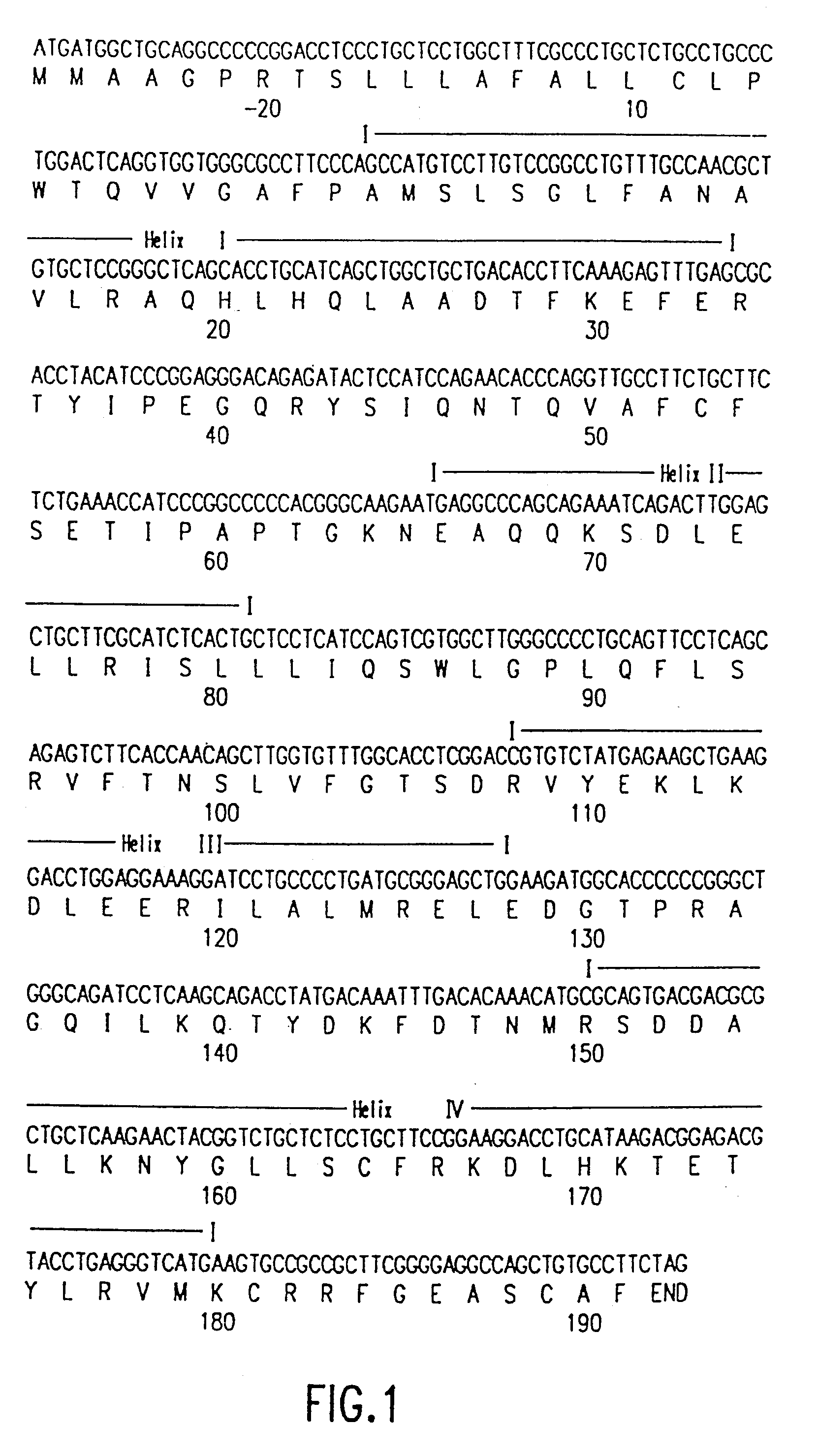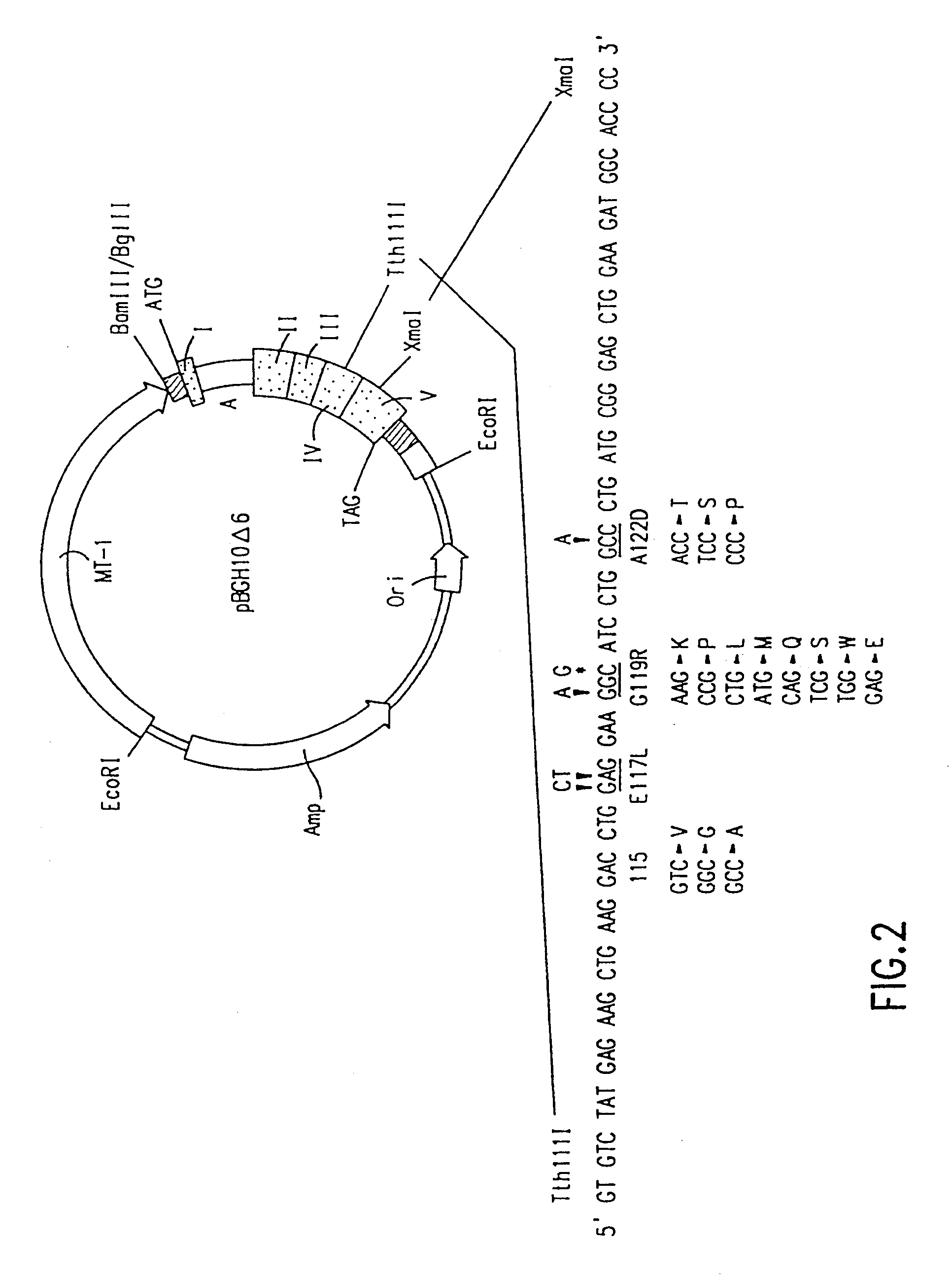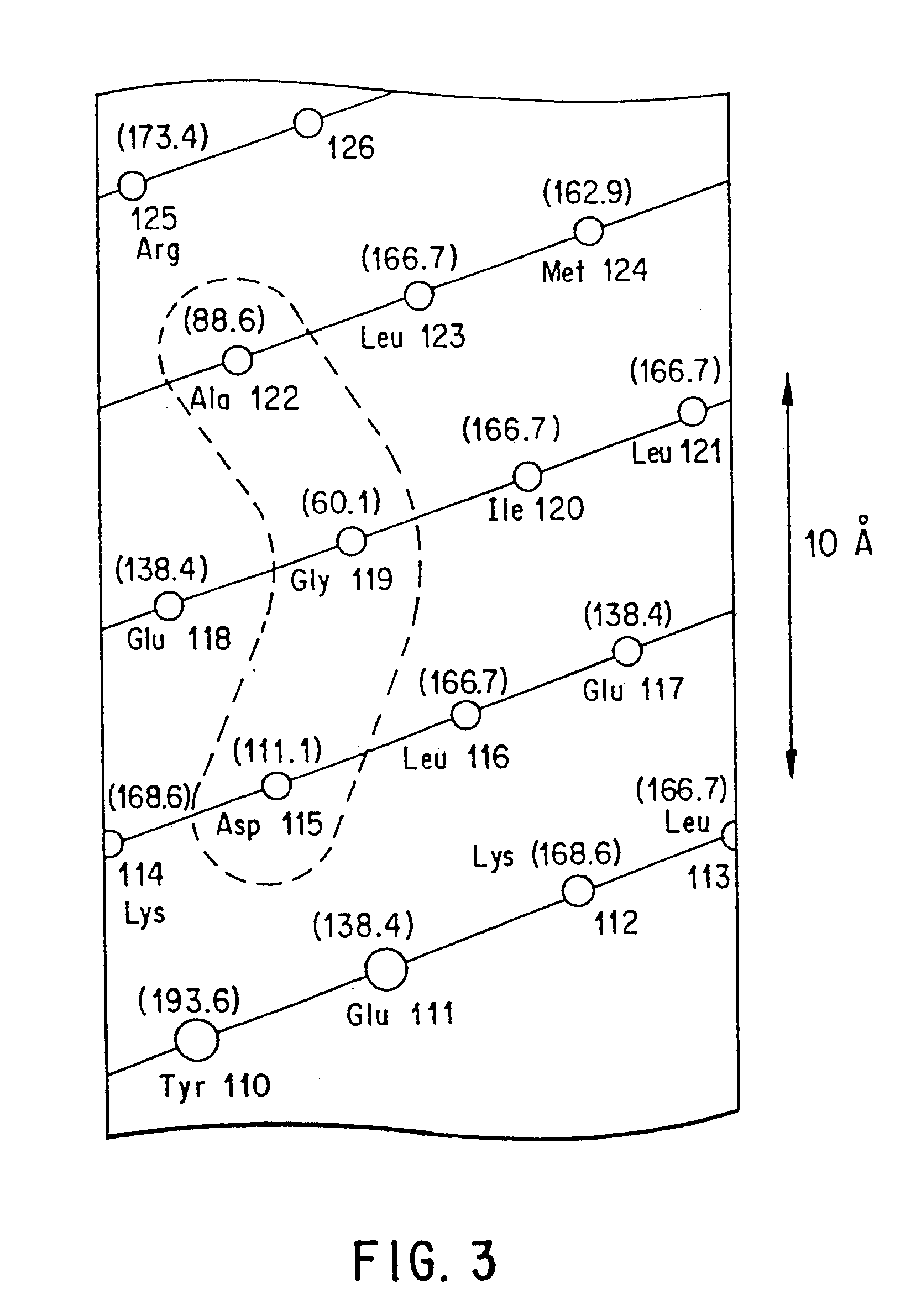Methods for treating acromegaly and giantism with growth hormone antagonists
a growth hormone and giantism technology, applied in the field of methods for treating acromegaly and giantism with growth hormone antagonists, can solve the problems of loss of growth-related activity, antagonists affecting this dimerization, and none of the mutant ghs were reported to inhibit growth
- Summary
- Abstract
- Description
- Claims
- Application Information
AI Technical Summary
Problems solved by technology
Method used
Image
Examples
example 2
Expression in Mammalian Cells in Culture
Using the in vitro mutagenesis protocols described above, two mutant bGH genes were generated initially: one converts Gly-119 to Arg (G119R) and the second converts Glu-117 to Leu, Gly-119 to Arg, and Ala-122 to Asp (E117L,G119R;A122D).
The plasmids encoding these mutations as well as wild-type bGH DNA (pBGH-10.DELTA.) were transiently introduced into cultured mouse L cells, which were subsequently analyzed for bGH expression. Following "western analysis", protein bands of approximately 22,000 daltons were observed for wild-type bGH and bGH derived from the two mutant genes.
Mouse L cells were maintained in DMEM (Gibco) plus 10% calf serum.and 25 .mu.g / ml gentamicin (Gibco). In this study, a modification of a previously described transfection procedure was employed. Lopaca et al., Nucleic Acids Res., 12:5707-5717 (1984). Briefly, 2 .mu.g of plasmid DNA was added to 1.0 ml of DMEM containing 0.2 mg DEAE-dextran. This solution was added to approxi...
example 3
GH Receptor Binding Studies
Culture fluids lacking serum were collected from cells transfected by pBGH10.DELTA.6 (wild-type bGH) and the mutant bGH genes. Following lyophilization of the culture media and bGH concentration determinations, competitive membrane binding studies were carried out as previously described. Smith and Talamants, J. Biol. Chem. 262:2213-19 (1987). Liver membrane preparations from C57BL / 6JxSJL hybrid mice of either sex (60-120 days old) were homogenized with a Brinkman Polytron in 4 volumes (w / v) of 0.3 M sucrose, 10 mM EDTA,. 50 mM Hepes, 0.1 mM TPCK and lmM PMSF at pH 8.0; The above step and all the following protocols were carried out at 4.degree. C. The homogenate was centrifuged at 20,000.times.g for 30 min. and the supernatant was centrifuged at 100,000.times.g for 1 hour. The pellets were washed once with 10 mM Hepes, pH 8.0 and recentrifuged. These pellets were resuspended in 10 mM Hepes, pH 8.0, to a protein concentration of approximately 50 mg / ml. The...
example 4
Transgenic Mouse Production Pilot Study
A series of transgenic mouse lines which contain wild-type and mutant bGH genes were produced by standard microinjection techniques. McGrane et al. (1988). DNA extraction from mouse tails, dot blots, and serum determinations was as described. McGrane et al. (1988).
The genes contain the transcriptional regulatory sequence of the mouse metallothionein I promoter which has been shown to be active in liver tissue as well as other tissues of the transgenic mouse. Palmiter et al., Nature 300:611-615 (1982). Offspring generated by the microinjection procedure were assayed for bGH DNA by slot blot hybridization analysis. Mouse lines were generated which contain-approximately one copy of the recombinant bGH DNA sequences derived from pBGH-10.DELTA.6 (wild-type), pBGH-10.DELTA.6-G119R, and pBGH-10.DELTA.6-E117L,G119R,A122D. Serum from transgenic animals were assayed for bGH levels by the Western technique. All mice which expressed the wild-type bGH trans...
PUM
| Property | Measurement | Unit |
|---|---|---|
| molecular weight | aaaaa | aaaaa |
| temperature | aaaaa | aaaaa |
| pH | aaaaa | aaaaa |
Abstract
Description
Claims
Application Information
 Login to View More
Login to View More - R&D
- Intellectual Property
- Life Sciences
- Materials
- Tech Scout
- Unparalleled Data Quality
- Higher Quality Content
- 60% Fewer Hallucinations
Browse by: Latest US Patents, China's latest patents, Technical Efficacy Thesaurus, Application Domain, Technology Topic, Popular Technical Reports.
© 2025 PatSnap. All rights reserved.Legal|Privacy policy|Modern Slavery Act Transparency Statement|Sitemap|About US| Contact US: help@patsnap.com



